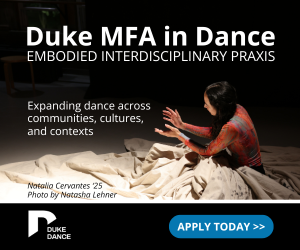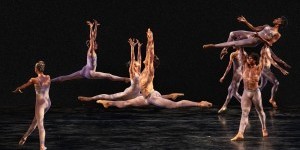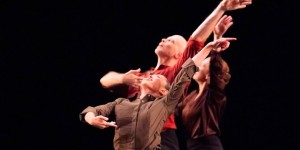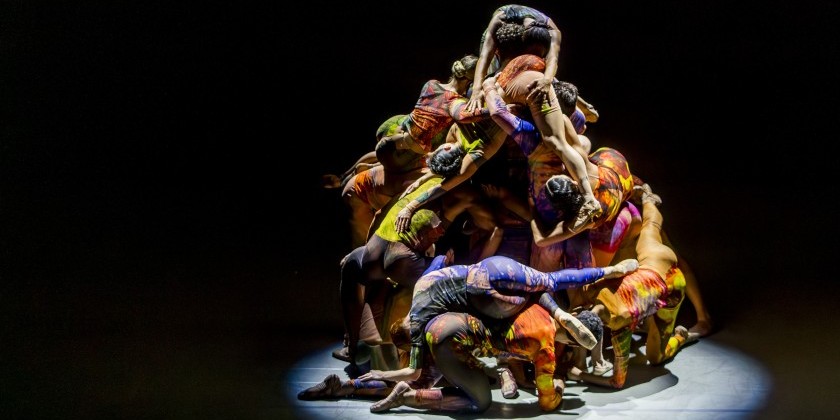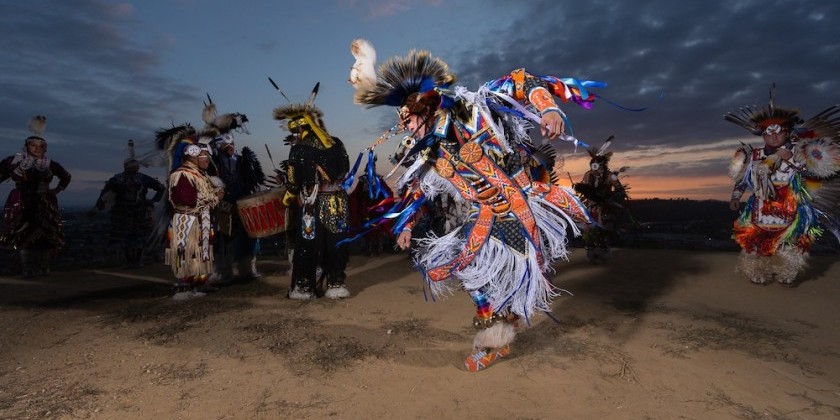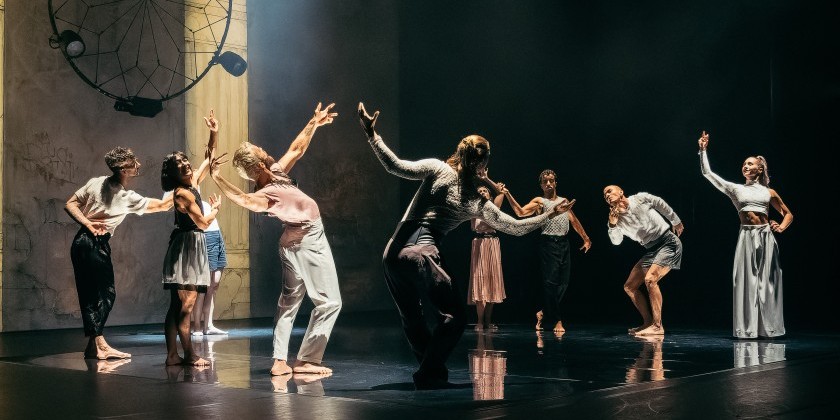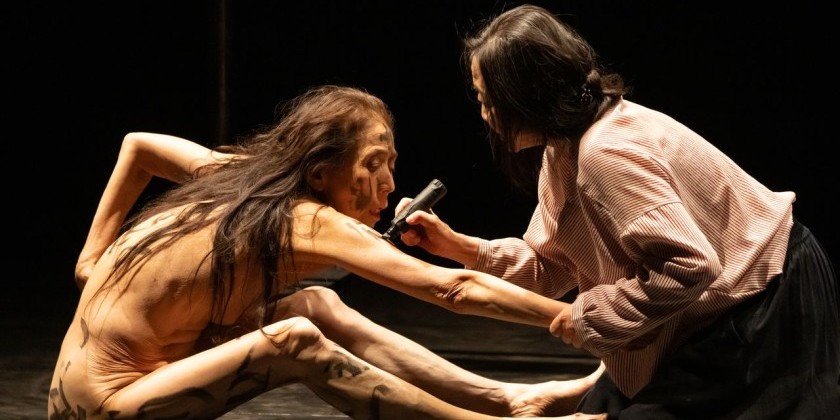IMPRESSIONS: Arpino Ballet Festival (Week One) at The Joyce Theater
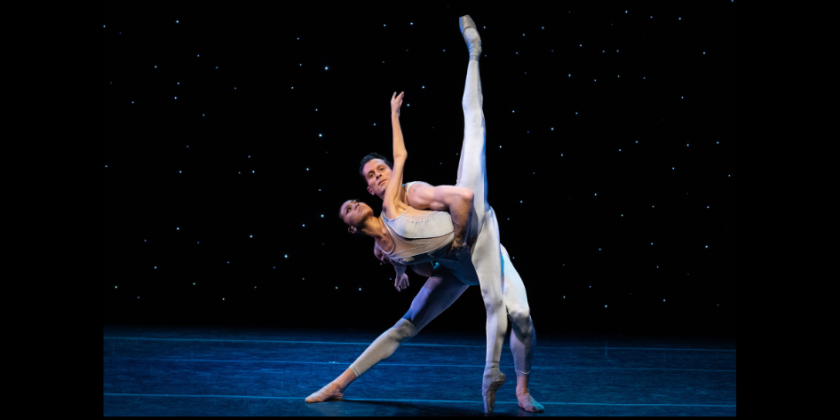
Starring Dance Companies From Around the USA
ARPINO BALLET FESTIVAL: PROGRAM ONE
Choreography by Gerald Arpino
Staged by Douglas Martin (Confetti), Tina LeBlanc (L’Air d’Esprit), Suzanne Lopez and Ashley Wheater (Round of Angels), Cameron Basden and Glenn Edgerton (Birthday Variations)
Music by Gioachino Rossini, Adolphe Adam, Gustav Mahler, and Giuseppe Verdi
Costumes designed by A. Christina Giannini and Stanley Simmons
Lighting by Penelope Curry, Thomas Skelton, and Kevin Dreyer
Artistic Ventures in Dance (AVID), directed by Emily Speed
Dancers: Emily Speed and Thomas Caleb Roberts, Sara Jumper and Elias Re, Lindsey Casale and Julian Goodwin-Ferris
San Francisco Ballet: Misa Kuranaga
Houston Ballet: Angelo Greco
Joffrey Ballet, directed by Ashley Wheater
Dancers: Jeraldine Mendoza and Dylan Gutierrez, with Edson Borbosa, Davide Oldano, Derek Drilon, Jonathan Dole, and Evan Boersma
Oklahoma City Ballet, directed by Ryan Jolicoeur-Nye
Dancers: Paige Russell, Alejandro González, Mayu Odaka, Leah Reiter, Anna Tateda, and FlanneryWerner
After decades of scandalous neglect, the late American choreographer Gerald Arpino (1923-2008) is at last receiving his due, in a two-week festival devoted to his works, September 30th to October 12th 2025, at The Joyce Theater. Dance companies from around the USA are pitching in to make it happen, with support from the Gerald Arpino Foundation and stagings by former Joffrey Ballet stars.
Boomeranging back into town, Arpino, the co-founder and long-time pillar of the Joffrey Ballet, is now ready to brush off the snobs who once poo-poohed his work dismissing him as no match for George Balanchine. The first — annual? — Arpino Dance Festival reveals Arpino as the classical master that he always was, and second to none. These works look fresh and vital. Clearly, the time has come for us to crawl out from beneath the weight of Balanchine’s dead body.
.jpg) Emily Speed and Thomas Caleb Roberts in Confetti. Photo: Steven Pisano
Emily Speed and Thomas Caleb Roberts in Confetti. Photo: Steven Pisano
With the exception of sleek Round of Angels, the virtues of the first week’s programming are unabashedly Retro. This is ballet without apologies, celebrating virtuosity, romanticism, and the full range of classroom steps arranged in novel enchaînements.A drumroll and galloping rhythms courtesy of Gioachino Rossini prepare us for the opening of Confetti, a romp for three couples bursting with energy. The men rush in carrying the women overhead, the ballerinas throwing up their arms and separating their legs in eye-popping splits. Making up for all the “modern” ballets without batterie, Arpino has the women beat their legs while held against their partners’ sides. The woman in yellow (Lindsey Casale) performs brisk entrechats mid-air between two partners, propping herself up on their hands; and, of course, the men are not excused from duty.
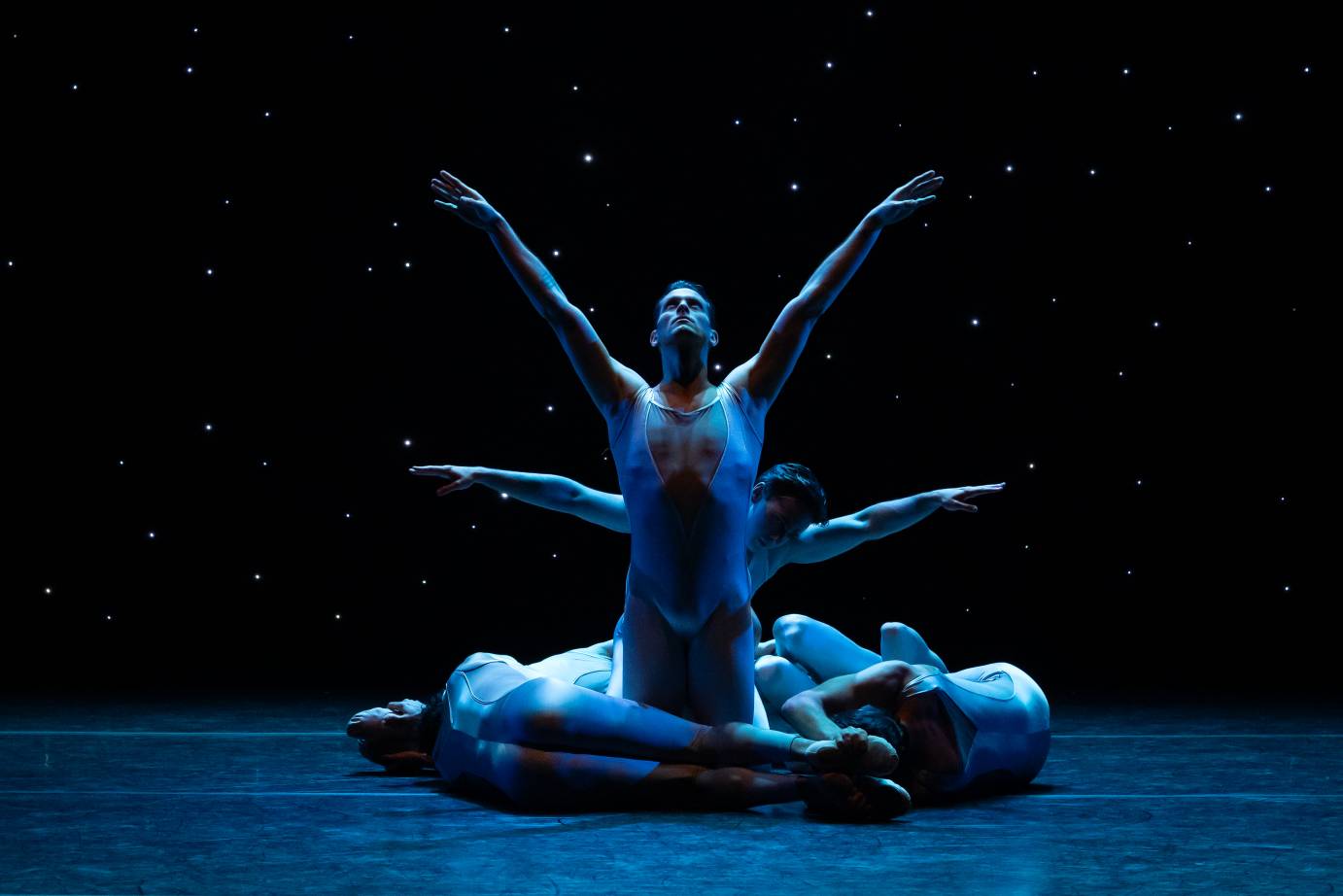 Dylan Guittierez and Evan Boersma in Round of Angels. Photo: Steven Pisano
Dylan Guittierez and Evan Boersma in Round of Angels. Photo: Steven PisanoIn a calmer moment, the women caress the air with gracious gestures wafting left and right (this choreographer loves symmetry), and they paw the ground delicately with silk-clad feet. Then the piece explodes again. Even when showing off a ballerina’s line in arabesque, Arpino makes her active — supported by her partner, the woman in green (Sarah Jumper) swings her leg from side-to-side in grands battements.
What could make this ballet more fun? Oh, yes. Tambourines. Soon the cast is whacking away shamelessly, emphasizing the ballet’s rhythmic underpinnings, and by the fish-dives at the end the smiling women have a tambourine in each hand. Performed by a group called AVID Dance Company (Artistic Ventures in Dance), Confetti’s execution is not faultless, but exuberance compensates for occasional lapses. The piece is supposed to be hard.
 Lilit Hogtanian and Julian Goodwin-Ferris in Confetti. Photo: Steven Pisano
Lilit Hogtanian and Julian Goodwin-Ferris in Confetti. Photo: Steven PisanoPieces like Confetti reveal a love for ballet’s historical traditions, which, in 1970, were more valued than they are today, kept alive by master teachers with vivid personalities and links to a legendary (often Russian) past. The decline of the private studio in New York has inevitably had an impact on an art whose roots are in the classroom.
L’Air d’Esprit (1978) is dedicated to the tragic Olga Spessivtseva, a legendary Giselle who may be better remembered today for her descent into madness than for her artistry. Arpino focuses on the artistry, particularly the speed and lightness that allow a Romantic ballerina to create the illusion of a wraith in flight. Principal dancers Misa Kuranaga (San Francisco Ballet) and Angelo Greco (Houston Ballet) revel in this will-o’-the-wisp number, in which she levitates on her toes and is flown about the stage in lifts like gusts of wind. Greco sets Kuranaga down oh-so-gently on one pointe, and offers her a sturdy perch on his shoulders, also allowing her to pose languorously on his back. Chasing Kuranaga ardently, he feigns delighted surprise when, like the mercurial being she is, she sneaks up behind him. Naturally, they both have powerhouse solos.
 Misa Kuranaga and Angelo Greco in L’Air d’Esprit. Photo: Steven Pisano
Misa Kuranaga and Angelo Greco in L’Air d’Esprit. Photo: Steven PisanoAfter this Romantic fantasia, Round of Angels (1983) calls a time-out for Modernism. Yet the piece is extravagantly theatrical in its own way. Set to the Adagietto from Gustav Mahler's 5th Symphony, Round of Angels possesses an otherworldly serenity that its startling, acrobatic partnering seems to belie. Dressed in shiny leotards that expose every inch of line, dancers from the Joffrey Ballet suggest a glowing, multi-limbed sea anemone, and the ballerina’s stretch seems superhuman.
Jeraldine Mendoza arches backward in Dylan Gutierrez’s embrace, and rises from demi-plié on pointe with her other leg in a high extension. Somehow, he catches her in a split with his own arms widespread supporting her extremities. Somehow, he lifts her from the floor to high on his shoulder. Yet they execute these maneuvers smoothly, and Mendoza remains icily reserved, wrapped in a mysterious ecstasy.
A corps of five men lend Mendoza additional superpowers, running with her overhead, swooping and dipping her. The corps also supply an architectural frame, pinwheeling around the central couple and pressed together in structures that, for all their visual rhythm, suggest intimacy and a profound human connection. More than the principal couple’s pyrotechnics, this male movement choir takes us to another plane of existence.
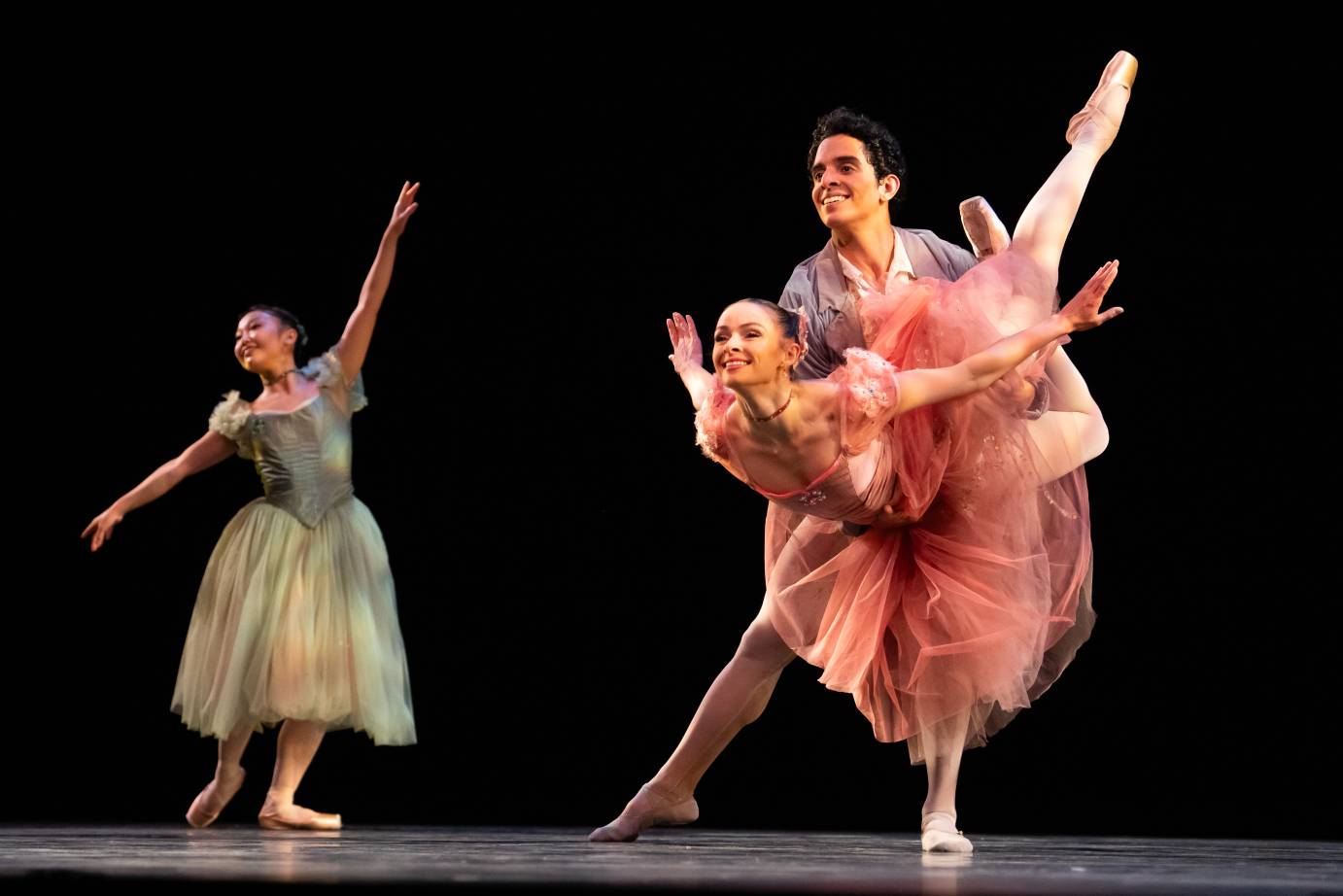 Anna Tateda, Paige Russell, and Alejandro González in Birthday Variations. Photo: Steven Pisano
Anna Tateda, Paige Russell, and Alejandro González in Birthday Variations. Photo: Steven Pisano
The spirit of ballet for ballet’s sake returns in Birthday Variations (1986), performed by Oklahoma City Ballet. Here Alejandro González is the petted favorite of five sylphs in tarlatan, who gather around and create a bower over González with their arms, appearing to bless him. (Think of the fairy’s kiss in the ballet of that name, or the Prologue to The Sleeping Beauty.) This poetic conceit provides a slender excuse for what then becomes a string of showpieces exercising the choreographer’s ingenuity, testing the dancers’ virtuosity, and foregrounding the steps themselves.González finds a different way to lift each of his partners; and Mayu Odaka’s variation invites us to consider the many uses of the relevé. Anna Tateda begins her variation with a surprise air turn; and Flannery Werner makes her entrance backward performing devilishly quick bourrées. Paige Russell repeatedly springs into fourth position on pointes, a novel way of drawing attention to the ballerina’s silken foot and making sure we see how pretty fourth position can be.
In these Birthday Variations, Arpino shares his love of his métier, which seems at least as important as dazzling us with tours de force (though he does that, too), or amusing us with coquetry. No one in this ballet ever forgets where the audience is, and they work awfully hard to make sure we won’t forget them, either. For this alone, Gerald Arpino deserves our gratitude.




